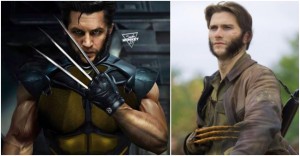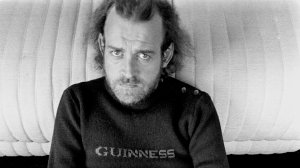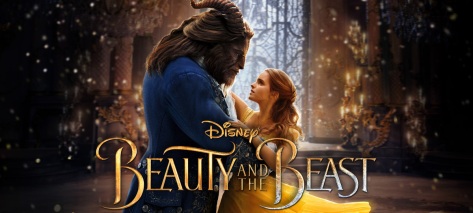By Maddie Scott
“At dawn in an outlying district of Warsaw, sunlight swarmed around the trunks of blooming linden trees and crept up the white walls of a 1930s stucco and glass villa where the zoo director and his wife slept in a bed crafted from white birch, a pale wood used in canoes, tongue depressors, and Windsor chairs.” So begins the Zookeeper’s Wife, a war story by Diane Ackerman, an acclaimed poet, essayist and naturalist. In the first sentence, it is clear that Ms. Ackerman is primarily a naturalist who likes to create sentences that have the same beauty in the words as the nature she is describing. The war story seems to at times have a secondary role in the Zookeeper’s Wife. For example, when describing the curfew the Poles were subject to under German occupation, Ackerman writes, “After curfew, Poles could no longer stroll under a canopy of stars.” This paragraph continues with a detailed explanation of meteor showers, including description and history, with only cursory mention of the Poles who could still watch such showers from balconies or windows, and a brief comparison of meteors to German gunfire and bombs.
The reason this works for some readers is that Diane Ackerman seems to be a kindred spirit of sorts with the main character in the book, Antonina Zabinski, the Zookeeper’s Wife. Antonina had the same connection with nature that Ms. Ackerman has. As the author writes,“Antonina loved to slip out of her human skin for a while and spy on the world through each animal’s eyes, and she often wrote from that outlook, in which she intuited their concerns and know-how, including what they might be seeing, feeling, fearing, sensing, remembering.” Their residence at the Zoo, the Villa, was home to many animals that participated in family life, including a badger, rabbit and hamster.

Amidst the descriptions of nature, Antonina and Jan’s (her husband) zoo animals and family, Ackerman weaves in the story of occupied Warsaw, her own family’s fight for survival (Antonina left the Zoo and the Villa more than once with her young son during particularly dangerous times of bombing and fighting), and the remarkable resistance efforts that she and her husband participated in. Jan was part of the Home Army and took part in the Warsaw Polish Uprising. His connection with a Jewish entomologist, Szymon Tenenbaum, who left his collection of insects at the Villa for safekeeping when he was forced from his home, opened the doors to the Ghetto (the Polish director of the Warsaw Ghetto’s Labor Bureau had a mutual admiration for Tenenbaum and his collection of insects) and Jan was able to help many Jewish friends and strangers escape. Many of these people took up temporary (and some more semi-permanent) residence at the Villa. All told, the Zabinskis helped to save approximately 300 Jews. Antonina demonstrated the same strength, compassion and resolve in helping their Jewish “guests” as she did in keeping her family safe.
The Zoo itself went through many changes during the war. Many animals were killed during the first days of bombing in Warsaw, and many more were moved by the “benevolent” Lutz Heck, the director of the Berlin Zoo, and a Nazi, who tried to convince Antonina that he had the animals’ best interest in mind (while later taking a hunting party back to the Warsaw Zoo to kill remaining animals). After the war, Antonina and Jan restore the Warsaw Zoo, before Jan’s retirement from the Zoo in 1951.
Ackerman shows great skill in representing the Zookeeper’s wife’s strengths. In the concluding chapter, she relays Jan’s quotes via Danka Narnish, an Israeli reporter, “Her confidence could disarm even the most hostile. It wasn’t just that she identified with them, but from time to time she seemed to shed her own human traits and become a panther or hyena. Then, able to adopt their fighting instinct, she arose as a fearless defender of her kind.”
The movie adaptation of the Zookeeper’s Wife is visually appealing, and it is easier to follow the comings and goings of the Jews that the Zabinski’s save, rather than in the book with its heavy description and seemingly non-linear timeline. Antonina, played by Jessica Chastain, convincingly conveys her love for the people she saves, animals, and her son. Her love for her husband, however, is clouded by a fictionalized romance between her and Lutz Heck, played by Daniel Bruhl. The movie takes evidence of Lutz’ admiration of Antonina from the book and turns it into a mutual attraction, much of which the movie is based upon. Antonina is also portrayed as soft-spoken and unsure of herself. Despite the great things she accomplishes in helping Jews to escape the Warsaw ghetto by giving them shelter in her house, the sense that the audience gathers from the movie is that she is overly emotional, tempted romantically by a Nazi who in the book she is clearly wary of from the beginning, and not an equal partner to her husband. The movie also takes great artistic license in portraying a young Jewish woman who was taken in by the Zabinskis after being brutally raped by Germans in the Ghetto. While such atrocities certainly happened again and again during the war, this character is created for the movie, and not mentioned in the book.
If one wants to learn of the remarkable story of Antonina Zabinski and to get a more accurate representation, it is far better to read the book than to see the movie.









 nature of the family unit. We declare to the world the value and importance of family life, but much of the confusion and difficulty we find existing in the world today is being traced to the deterioration of the family. Home experiences where children are taught and trained by loving parents are diminishing.” One Disney movie that strongly emphasizes family is Lilo and Stitch. “Ohana means family. Family means nobody gets left behind or forgotten.” This line was made famous by Stitch who was adopted by Lilo’s family.
nature of the family unit. We declare to the world the value and importance of family life, but much of the confusion and difficulty we find existing in the world today is being traced to the deterioration of the family. Home experiences where children are taught and trained by loving parents are diminishing.” One Disney movie that strongly emphasizes family is Lilo and Stitch. “Ohana means family. Family means nobody gets left behind or forgotten.” This line was made famous by Stitch who was adopted by Lilo’s family.
 The excitement was there, the technology was available, and yet many of BYU-Hawaii’s students were not happy with the result of the movie. Was it the anticipation? Could it be that the past can’t be replicated in the present? Whatever the answer is the BYU-Hawaii student body was not happy with the movie and voiced their opinions about where the movie went wrong.
The excitement was there, the technology was available, and yet many of BYU-Hawaii’s students were not happy with the result of the movie. Was it the anticipation? Could it be that the past can’t be replicated in the present? Whatever the answer is the BYU-Hawaii student body was not happy with the movie and voiced their opinions about where the movie went wrong. It lagged on forever and when it was time to morph and get the action rolling the movie came up short. I expected the action to be like the superhero movies but it didn’t live up to the hype.” Much of what the students said about the movie had to do with the pace. Power Rangers had the expectation of living up to the hype of so many of the superhero movies that are currently in production. When BYU-Hawaii students were asked how it compared to the Marvel and DC comic movies the overall consensus was, “NOT EVEN CLOSE!”
It lagged on forever and when it was time to morph and get the action rolling the movie came up short. I expected the action to be like the superhero movies but it didn’t live up to the hype.” Much of what the students said about the movie had to do with the pace. Power Rangers had the expectation of living up to the hype of so many of the superhero movies that are currently in production. When BYU-Hawaii students were asked how it compared to the Marvel and DC comic movies the overall consensus was, “NOT EVEN CLOSE!”
 It is the tale of two teenagers in World War II France: A blind girl and a male member of the Hitler youth. The latter figuratively eyeless. These are disparate worldviews, but their lives eventually converge. The merge of mindsets not only makes a good story, but forces the reader to confront delicious dilemmas avoided in our religious lives. Why don’t we recognize the limitations of authority? What is it about evil that makes it so difficult to discern?
It is the tale of two teenagers in World War II France: A blind girl and a male member of the Hitler youth. The latter figuratively eyeless. These are disparate worldviews, but their lives eventually converge. The merge of mindsets not only makes a good story, but forces the reader to confront delicious dilemmas avoided in our religious lives. Why don’t we recognize the limitations of authority? What is it about evil that makes it so difficult to discern? Life may impair us, but never obstructs our drive to uncover love in its dark recesses. Read this novel, and don’t be afraid to take a year.
Life may impair us, but never obstructs our drive to uncover love in its dark recesses. Read this novel, and don’t be afraid to take a year.
 some bring inflatable sharks to concerts and even haul in sand to simulate a beach in parking lots. The new Netflix documentary, “Parrot Heads” transcends the foundational; it’s a look at “Parrot Head 2.0,” which has spawned an entire rock genre, “trop rock.” Trop rock bands and festivals are a vestige of Buffett culture, supporting an argument of this blog that this is truly pop culture religion.
some bring inflatable sharks to concerts and even haul in sand to simulate a beach in parking lots. The new Netflix documentary, “Parrot Heads” transcends the foundational; it’s a look at “Parrot Head 2.0,” which has spawned an entire rock genre, “trop rock.” Trop rock bands and festivals are a vestige of Buffett culture, supporting an argument of this blog that this is truly pop culture religion. Considerthe song, Fins; fans sway in unison and repeat various hand movements.
Considerthe song, Fins; fans sway in unison and repeat various hand movements. The documentary is riddled with compelling facts such as $42 MILLION raised FOR CHARITIES. Parrott heads DONATED MORE THAN THREE MILLION HOURS OF VOLUNTEER TIME SINCE THEIR INCEPTION 25 YEARS AGO. What could be more religious than that?
The documentary is riddled with compelling facts such as $42 MILLION raised FOR CHARITIES. Parrott heads DONATED MORE THAN THREE MILLION HOURS OF VOLUNTEER TIME SINCE THEIR INCEPTION 25 YEARS AGO. What could be more religious than that?
 Do you really expect him to shave people’s mustaches and not kill people… With Deadpool’s immense financial success, Fox gave director James Mangold the green light to go all in on the R ratings. Don’t worry there isn’t anything too awful that would make you reconsider who you are as a person. However, if you don’t like violence this may not be the movie for you. In this film Logan openly comes out and attacks as a Wolverine is expected to do. Scenes of him bisecting heads and punching through skulls was the main reason for the film getting the rating that it did. There are some scenes of small strays of female toplessness which only adds to the R rating. Profanity also was a factor in the film receiving its rating as the F word was used definitely more than once throughout the film.
Do you really expect him to shave people’s mustaches and not kill people… With Deadpool’s immense financial success, Fox gave director James Mangold the green light to go all in on the R ratings. Don’t worry there isn’t anything too awful that would make you reconsider who you are as a person. However, if you don’t like violence this may not be the movie for you. In this film Logan openly comes out and attacks as a Wolverine is expected to do. Scenes of him bisecting heads and punching through skulls was the main reason for the film getting the rating that it did. There are some scenes of small strays of female toplessness which only adds to the R rating. Profanity also was a factor in the film receiving its rating as the F word was used definitely more than once throughout the film. X-Men no longer being a factor. Some of those reasons were the rise in villains and their destruction of the former super team. Logan is now an old man working as a limo driver to try and support himself and Professor X. Both are getting old and no longer have the power they once had and as a matter of fact their powers are the reason for their suffering in old age. Out of all the X-Men movies this is full of pain and sorrow. It is definitely the most depressing of all the movies and the characters are sad throughout the whole film. This is what makes it unique as it goes against the standard for Superhero narratives. We see the flaws and the weaknesses of superheroes even though we place them on a higher level than anyone else. This realness gives the movie a separation from others and is the reason why it is so great.
X-Men no longer being a factor. Some of those reasons were the rise in villains and their destruction of the former super team. Logan is now an old man working as a limo driver to try and support himself and Professor X. Both are getting old and no longer have the power they once had and as a matter of fact their powers are the reason for their suffering in old age. Out of all the X-Men movies this is full of pain and sorrow. It is definitely the most depressing of all the movies and the characters are sad throughout the whole film. This is what makes it unique as it goes against the standard for Superhero narratives. We see the flaws and the weaknesses of superheroes even though we place them on a higher level than anyone else. This realness gives the movie a separation from others and is the reason why it is so great.
 is no meager concert film. Yet performance footage compels, and to our liking, songs play for more than thirty seconds. While paling in comparison to the more mature “Eagles History,” and Peter Bogdonovich’s “Tom Petty: Runnin’ Down a Dream,” there is much here in terms of the compelling question, “Who was Cocker?” Filmmaker John Edgington lays it out there for fans to pass judgement.
is no meager concert film. Yet performance footage compels, and to our liking, songs play for more than thirty seconds. While paling in comparison to the more mature “Eagles History,” and Peter Bogdonovich’s “Tom Petty: Runnin’ Down a Dream,” there is much here in terms of the compelling question, “Who was Cocker?” Filmmaker John Edgington lays it out there for fans to pass judgement. Starred boots pigeon-toed in. Yet how far should a “single-single” carry one? “With a Little Help” is like Pure Prairie League’s “Amy;” the band would do it ten times if they could. Making things worse, it was a Beatles cover. Cocker had other songs, but few are likely to endure. As for the “Mad Dogs and Englishmen” project of the seventies, success was more Leon Russell’s than Joe Cocker’s. See the new autobiography of the Ban’s Robbie Robertson of you doubt Russell’s superior songwriting.
Starred boots pigeon-toed in. Yet how far should a “single-single” carry one? “With a Little Help” is like Pure Prairie League’s “Amy;” the band would do it ten times if they could. Making things worse, it was a Beatles cover. Cocker had other songs, but few are likely to endure. As for the “Mad Dogs and Englishmen” project of the seventies, success was more Leon Russell’s than Joe Cocker’s. See the new autobiography of the Ban’s Robbie Robertson of you doubt Russell’s superior songwriting.





 perspective, there’s continuity of emotion— laughing, then sadness, and optimal tension appropriate for children. It personifies various parts of the earth, as does Hawaiian belief. You see a sassy and loving side of the ocean, the earth’s anger at its mistreatment, and its gratitude when honored with love and respect.
perspective, there’s continuity of emotion— laughing, then sadness, and optimal tension appropriate for children. It personifies various parts of the earth, as does Hawaiian belief. You see a sassy and loving side of the ocean, the earth’s anger at its mistreatment, and its gratitude when honored with love and respect.